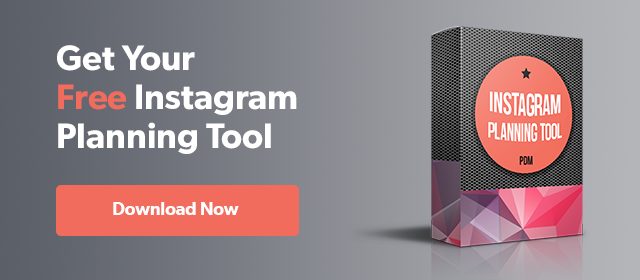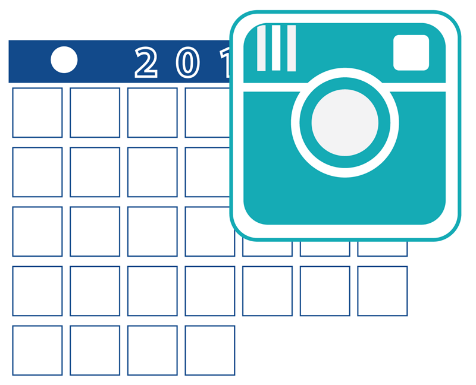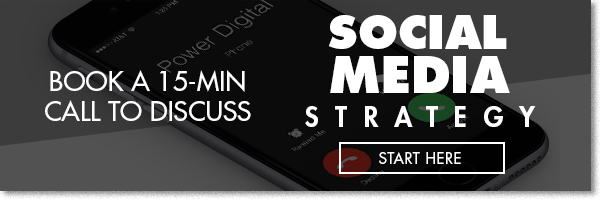The Most Important Instagram Updates for Brands in 2018

To say that social media is a critical part of any marketing strategy is firstly obvious, and secondly, old news. However, Facebook isn’t the only major player anymore. Other social media platforms, each with a different emphasis and primary audience, are an integral part of effective digital marketing.
Determining which platforms will be most complementary to your brand is a critical part of a consumer-focused content strategy.
Instagram has made some serious headway in the marketing world via social media landscape in 2018. The numbers are compelling: People are ten times more likely to engage with brands on Instagram compared to Facebook, and conversion rates of people who follow a page (as opposed to liking a page on Facebook) are almost twice as likely to take action as a result of their engagement with the brand online.
Instagram has taken to heart their platform’s marketing attention, and in 2018, they rolled out several updates aimed at making it easier for brands to get in front of the right consumers. We here at Power Digital Marketing are pretty excited about Instagram’s new offerings and are going to help you navigate seven of our favorite new features so that you can optimize your digital media strategy. After all, that’s kind of our thing.
Related: Instagram’s New Updates & Future Features
The Simplified Inbox
In May of this year, Instagram rolled out a new inbox setup that will make communication with users and followers much easier. In the new inbox, your customers can slide into the DMs and get noticed, instead of getting buried under hundreds of other notifications. Prior to this new rollout, all communications were rolled into one — even if the “message” didn’t warrant a response. The key difference is that now direct messages will be filtered out from the story mentions and tags. The new inbox is comprised of two folders: direct messages and the pending folder. This will help businesses sort through what needs to be addressed, such as a direct consumer inquiry, and not get bogged down by messages that don’t require a reply.
The new and improved inbox will also feature the ability to star stories (for easier prioritization), as well as filter out conversations, making managing high-volume communication with your following much more streamlined (thanks, Zuckerberg!) Instagram also announced that they will be rolling out quick replies in the coming weeks, so business pages will be able to store custom pre-written responses that can be sent in response to frequently asked questions.

Source: https://wersm.com/instagram-reorganises-and-simplifies-its-inbox-for-businesses/
The New Call-to-Action buttons (CTA)
Perhaps the most important update this year from a business standpoint is the new CTA buttons. Rather than having to direct users to a different site to complete transactions by captioning photos with “message us” or “call us,” the new call to action buttons allow users to make arrangements and/or purchases directly on the platform.
The buttons fall into four categories: Book, Get Tickets, Reserve, or Start Order with major syndicate partner websites such as GrubHub, Yelp, Atom Tickets, Mindbody and Eventbrite, among others. Depending on the nature of your business, you can register with one of these third-party affiliates which will allow for Instagram users to not only find your business, but to engage with it directly without leaving the website. For example, a restaurant can register with GrubHub if they aren’t already (which, in most cases, they probably should be anyway). Then, when they post, they will be able to include the new CTA buttons. We all know convenience is key, and that customers drop off with every extra step they need to take. Cutting out one extra step for your customers who are ready to buy your product or service = higher conversion rates. Cha-ching.
Instagram Scheduling
Prior to this rollout, the best the platform offered in terms of planning posts in advance was to schedule push notification reminders. Talk about inconvenient. Luckily, the dark ages of Instagram post planning are finally over.
Maybe a little late to the party with this one, (I’m talking to you, Instagram), but better late than never. This feature — currently only available to Instagram business profiles — allows for automatic postings to be scheduled in advance, much like Facebook (who bought out Instagram in 2012).
At present, the feature is not available for ads or within the product itself, but we have to start somewhere, right? What Instagram chose to do is add the support to Instagram’s API, so that third part social media apps and tools like Hootsuite, Sprout Social or SocialFlow now have access to the functionality. It’s up to these programas to then add the functionality to their own products, which most of them have done since the option became available. Hootsuite was quick to implement the feature, with CEO Ryan Holmes adding, “ The scheduling and publishing of Instagram content has been the number one request for our 16 million customers. Now, they can manage large volumes of content, multiple team members and multiple Instagram accounts with ease and security.”
This update, at least in its early stages, primarily favors larger businesses and organizations as smaller brands don’t use programs like Hootsuite for the platform.
All in all, the upside here is an easier, more cohesive Instagram (and therefore, brand) feed as well as potentially more long-term, connected posts (such as a contest or giveaway), blazing the trail for content strategists everywhere.
The new Instagram scheduling feature is especially useful for large-scale businesses who post thousands of posts per year — something that would be extremely time-consuming and resource intensive to support manually.
Source: http://www.hutdogs.com/ext/blog/internet-marketing/schedule-instagram-posts
Spotify Integration
On May 1st of this year, Spotify and Instagram teamed up. Through the new partnership, Instagram users can now share what they are listening to on the music-streaming platform as a story to their feed.
Businesses such as bars, music venues, artists, and bands can use this new feature to promote their brands and integrate music into their content and various promotions like events and concerts. Through hashtags and organic sharing, brands can get more reach in targeted markets. It also makes Instagram a viable option to release singles for musical artists.

Source: https://www.makeuseof.com/tag/6-unique-apps-to-blend-instagram-and-music-beautifully/
Story Mention Sharing
Back in the stone age, when someone mentioned you in a story, you would have to save it to your phone, then post is as a new post. Ain’t nobody got time for that. Luckily, Instagram addressed this pain point by introducing story mention sharing. If your brand is mentioned in someone else’s content or vice-versa, you will receive a direct message notifying you of the mention.
Big whoop, you say. Here’s the advantage: You can now share that story to your brand’s feed. Their name will still appear at the top, giving your feed real user-generated content. You can even encourage your followers to post something in which they are engaging with the brand — this has major appeal for the platform’s most engaged users and biggest brand fanatics who would jump at the opportunity to appear on a brand’s Instagram feed (Hello! Career as an Instagram model!). This new feature not only helps your brand engage more directly with users, but it helps generate unique and impactful content for your feed in an easy, but effective way.
If you can get key influencers to share your content or mention your brand, the exposure, publicity, and reach will help translate into your bottom line.
Related: New Instagram Story Advertising Types: Canvas, Collections, and Carousels Roll Out

Shoppable posts on Instagram
In March of this year, Instagram launched shoppable posts. As mentioned earlier, in bygone days, it wasn’t possible to make purchases from the store directly on the platform. Thanks to the new feature, consumers can make a purchase — from discovery to check out — right there on the platform. This has been especially useful for those in the fashion industry.
As an extension of the shoppable posts, Instagram also introduced product tagging. You can now tag a product in the same way you would tag a friend in a picture within a post. That way, rather than having to redirect to a website and then find the product on it, consumers have all the information right there at their fingertips.
When a post is shoppable, a small, white circle icon will appear on the bottom left-hand side of the post with a shopping bag in it. When looking at a brand’s page, a small, white shipping bag will appear in the upper right-hand corner of the feed, indicating that the item featured in the post is available for purchase.
To use this new feature, you will need to set up an account with Shopify. Even a basic plan with Shopify makes you eligible to create shoppable posts on Instagram. You will also have to add the items to your Facebook’s product catalog. Once these steps are complete, you can make posts on Instagram with the shopping bags icons, which will allow consumers to make purchases directly from the post.
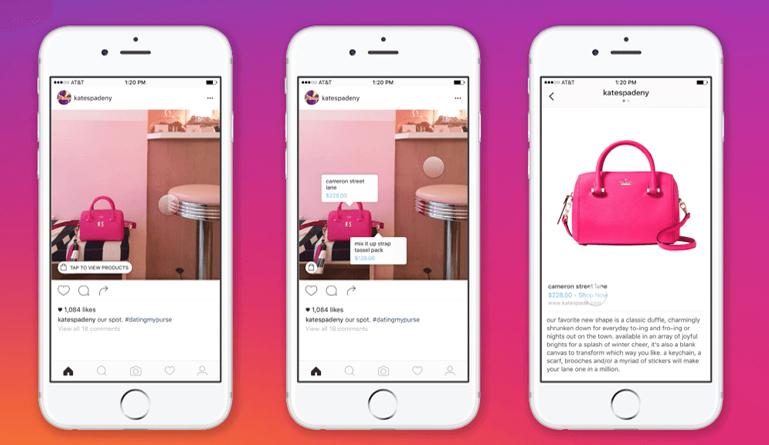
Source: https://www.techfunnel.com/martech/tips-to-sell-with-instagram-shoppable-posts/
Turning Existing Posts into Ads
Ads, ads, ads. It might seem like everything you’ve done organically up to this point has all been for naught, but that isn’t the case. If you have a particularly successful post that you want to retroactively convert into an ad, you can do that now.
This feature will only be available for single post or videos and, at least for the time being, it will not support shopping posts or stories. Essentially, you can now use Facebook’s highly refined Ads Manager to manage your Instagram posts (as opposed to Instagram’s less-targeted Promote option). As is the case when creating a new Facebook ad, follow the steps for creating a Quick Creation. You will now see a button at the top that says “Use Existing Post.” By clicking that, you will get a drop down that allows you to pick which post you want to convert into an ad, and publish, Viola … past posts are now ads.
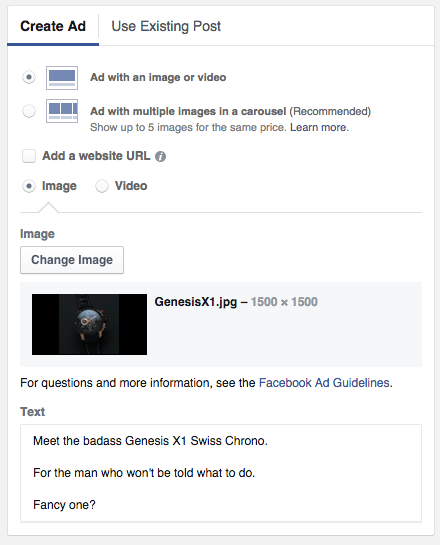
(Source: https://www.agorapulse.com/blog/facebook-brand-awareness-ads-intro )
It’s worth noting that you’ll need a business account on both Facebook and Instagram to utilize most of the new features. Which one of these will be instrumental to your business’s needs really depends on the nature of your business. These new rollouts are making it easier for brands to connect with interested consumers while also cultivating a larger brand presence. Facebook, the big dog in the social media world, has advertising and promotion down pretty well. Now, they’re using their tried-and-true tools on Instagram, allowing more opportunities for brands who know how to use them correctly. If you’re interested in ramping up your businesses’ social media strategy, we’re here to help. Request a free audit and we can work together to identify a strategy that works best for your brand’s vision and marketing goals.
Our Editorial Standards
Reviewed for Accuracy
Every piece is fact-checked for precision.
Up-to-Date Research
We reflect the latest trends and insights.
Credible References
Backed by trusted industry sources.
Actionable & Insight-Driven
Strategic takeaways for real results.


